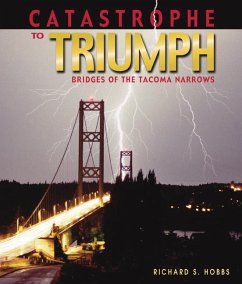In Washington State during the 1920s, before the completion of the Tacoma Narrows Bridge, travelers to the Kitsap Peninsula faced a long, often expensive journey. They could either take the ferry from Point Defiance or select a lengthy highway route. The driving distance from Tacoma to Gig Harbor was 107 miles. A bridge would shorten that to a mere eight miles. A logical site existed near Tacoma, where Puget Sound narrows into a channel slightly less than a mile wide. But even here, the geographic setting was daunting. At this spot, the water is more than 200 feet deep, and treacherous tides surge through four times each day. The sheer cost of construction at such a challenging location also presented a significant barrier. Yet, through the determined efforts of hundreds of people, Galloping Gertie and her successors were built, changing the future of suspension bridge engineering. Far more than simply a tale about steel and concrete, the full story of the Tacoma Narrows bridges revealed in Catastrophe to Triumph is also one about people--engineers, workmen, politicians, and ordinary community members--who campaigned for civic improvement, pushed design theory to its limits, infused grace and elegance into functional structures, weathered scandal and danger, survived and investigated a heartbreaking collapse, and constructed, rebuilt, and today continue to maintain the intricate spans, ultimately propelling catastrophe into triumph.
Bitte wählen Sie Ihr Anliegen aus.
Rechnungen
Retourenschein anfordern
Bestellstatus
Storno


![The Quebec Bridge [microform]: an Engineering Triumph in the World's History: the Connecting Link Between the Canadian Government Railways North and The Quebec Bridge [microform]: an Engineering Triumph in the World's History: the Connecting Link Between the Canadian Government Railways North and](https://bilder.buecher.de/produkte/64/64534/64534622m.jpg)
![Report on a Railway Suspension Bridge [microform]: Proposed for Crossing the St. Lawrence River at Quebec, Made to His Worship the Mayor and the City Report on a Railway Suspension Bridge [microform]: Proposed for Crossing the St. Lawrence River at Quebec, Made to His Worship the Mayor and the City](https://bilder.buecher.de/produkte/66/66148/66148283m.jpg)
![Artistic Bridge Design [microform]: a Systematic Treatise on the Design of Modern Bridges According to Aesthetic Principles Artistic Bridge Design [microform]: a Systematic Treatise on the Design of Modern Bridges According to Aesthetic Principles](https://bilder.buecher.de/produkte/65/65514/65514322m.jpg)
